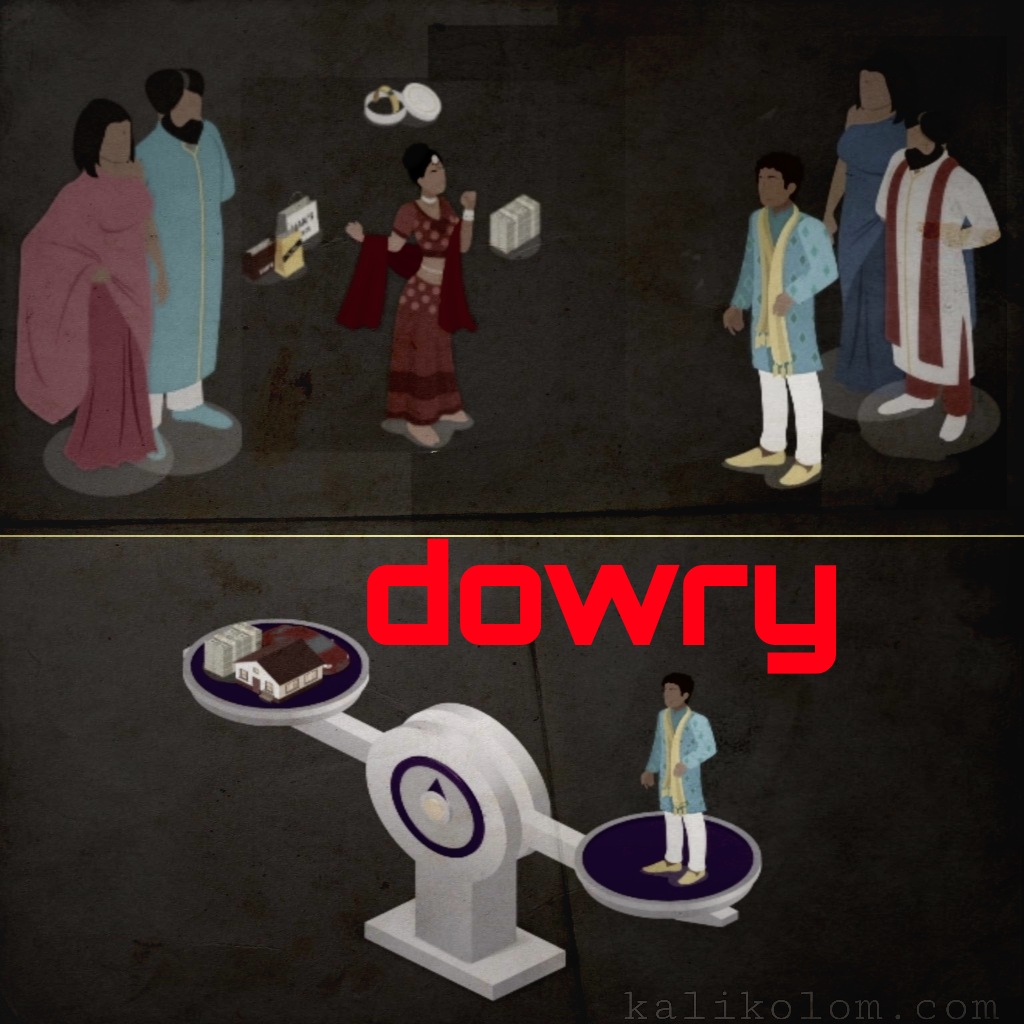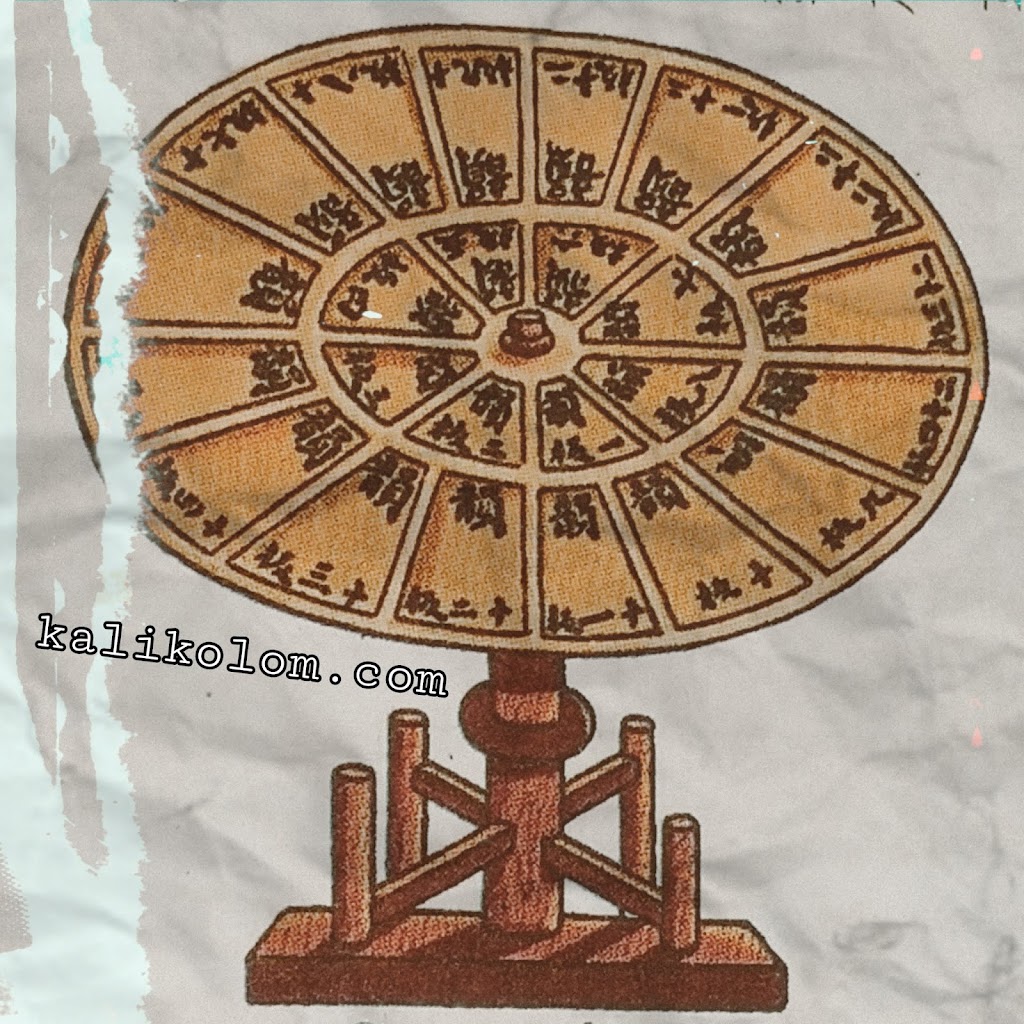Introduction
Religion has been a very important part of human life since the dawn of civilization. In ancient times, helpless people were afraid of everything powerful and powerful in nature It is from this fear that at one time the imagination of God was formed in their minds. They try to please nature in order to protect it from various mysteries and powerful forces. Gradually, they try to satisfy various aspects of nature for their own safety, happiness, etc. Thus different gods are created from human imagination. In order to protect themselves from God’s wrath, people try to please God by worshiping him. This is how God and religion originated in ancient human civilization. Later, religion began to have a profound effect on people’s state and social life.
Religion originated in human society before the formation of the state in ancient times. Religion also played an important role in keeping people united in that era. Religion, along with a few other elements, later played a particularly important role in the origin of the state. After the origin of the state, religion had a deep connection with the state life of the ancient and medieval people. In ancient and medieval times, various emperors of the East and the West used religion in their administration. They have sometimes influenced religion in the interests of their own politics. In India, Maurya emperor Ashoka, Sultan Alauddin Khalji of the Khalji dynasty, Mughal emperor Akbar and others have succeeded in using religion cleverly for the security and unity of the state. On the other hand, the development of papacy in Christianity in Europe, the Crusades between Christians and Muslims, the development of caliphate in the Arab world, etc., greatly influenced the medieval state system.
India: Ashoka and Dharma
Countries of many languages and many religions have used different rulers of India at different times to maintain unity and solidarity in India. In this case, the aim of the emperors was to protect the unity and solidarity of the country, to increase their political authority and power by using religion. Among the emperors in ancient and medieval India who used religion wisely and succeeded in governing the country were Ashoka, the greatest emperor of the Mauryan dynasty in ancient times, Alauddin Khalji, the best emperor of the Khalji dynasty of the Middle Ages, and Akbar, the greatest emperor of the Mughal dynasty.
Battle of Ashoka and Kalinga
One of the sixteen small kingdoms that existed in India in the 6th century BC, called the Sixteenth Mahajanapada, was the Mahajanapada Magadha, part of present-day Bihar. A man named Chandragupta Maurya ascended the throne of Magadha in 324 BC and established the rule of the Maurya dynasty. The best king of this dynasty was Emperor Ashoka. He ascended the throne in 263 BC.
The horrors of the Kalinga war
In the thirteenth year of his accession to the throne (261-260 BC) he invaded Kalinga, which now forms parts of present-day Orissa and Andhra Pradesh. One lakh people were killed in the battle of Kalinga, one and a half lakh people became homeless and many people suffered immensely in various ways. After winning the battle, Ashoka annexed Kalinga to his empire. Toshali is the capital of Kalinga, the fifth province of the Mauryan Empire.
Regret:
Although the Kalinga kingdom belonged to Ashoka’s empire, the horrors of the Kalinga war made him deeply remorseful. Ashoka admits in his first and second minor inscriptions that the massive devastation of the Kalinga war changed his mind and he converted to Buddhism.
Ashoka and Buddhism
Conversion to Buddhism
Emperor. After the battle of Kalinga, Ashoka converted to Buddhism from Upagupta and began to propagate the religion in various parts of the country and abroad.
Bani Khodai: Ashoka mentions in his inscription that he preached Gautama Buddha’s message of non-violence among the common people. He has engraved Buddha’s words on various hills and pillars to propagate Buddhism. Ashoka mentions in his eighth inscription that he introduced ‘Dhammayatra’ instead of ‘Biharyatra’.
Affection and loyalty
Inscriptions from Sanchi, Sarnath, Allahabad, etc. show Ashoka’s devotion to Ashram Buddhism. Apart from this, Ashoka’s allegiance to ‘Buddha, Dhamma and Sangha’ is known from the inscriptions of Bairat, Bhabru etc.
Dhamma and its propaganda program
Although Emperor Ashoka fully practiced the precepts of Buddhism in his personal life, he never referred to the religion he preached as Buddhism. Since it is not always possible for ordinary people to follow all the strict precepts of Buddhism, Ashoka simplifies the religious precepts for them. He referred to the religion he preached as ‘Dhamma’. He was the first to use the word ‘dhamma’ in the Musk script. Ashoka’s preached ‘Dhamma’ was simple and free from complex philosophical theories. He undertook a massive program to propagate his ‘Dhamma’. Was one of them
1. Initiatives to propagate ‘Dhamma’ and
2. Public welfare activities.
Initiative to propagate Dhamma
Since his conversion to Buddhism, Ashoka has taken the initiative to propagate this religion in various parts of the country and abroad.
1. Pilgrimage:
He started ‘Dhamma Yatra’ instead of ‘Bihar Yatra’ and visited various places of pilgrimage in Buddhism. He said that he had traveled to the shrines associated with the life of the Buddha by accepting worship.
2. Employee recruitment
Ashoka appointed Rajuk, Yut, Purush, Pradeshik etc. employees for the purpose of propagating Dhamma. They are instructed to preach by visiting the empire every three or five consecutive years.
3. Dhammamahamatra
Ashoka appointed an employee named Dhammamahamatra for the purpose of propagating the message of Gautama Buddha, welfare of the people, and establishing harmony among different communities.
4. Dhammalipi
Ashoka engraved ‘Dhammalipi’ in different parts of the country for the spiritual welfare of the people. He engraved these inscriptions on a mound near a crowded place, on a stone pillar and on a hill for the purpose of preaching the message of himself and Gautama Buddha to the people.
5. Third Buddhist music
Ashoka convened a third session of Buddhist music in the capital, Pataliputra, in order to overcome the differences of opinion and preserve the purity, unity and solidarity of the religion.
6. Sending messengers
He sent envoys to Chola, Keralaputra, Satyaputra, Pandya, Sinhala, Burma, Egypt, Greece etc. In Sinhala, Ashoka’s son (brother in sect) Mahendra and daughter (sect in sister) Sanghamitra, moderate in Kashmir, Maharakshit in Greece, Dharmarakshit in the frontier states, Mahadharmarakshit in Maharashtra, Mahadev in Mysore preached Buddhism. Historian H. G. Wells says that Buddhism, confined to a small area in the Gangetic valley of northern India, became a world religion at the initiative of Ashoka. Historian Senert says that Ashoka’s preaching illuminated the minds of superstitious people in Asia, Europe, and Africa. Dr. for non-violent and pacifist preaching. Vincent Smith called Ashoka the “first religious leader of mankind”.
Public welfare programs
Ashoka also undertook various public welfare programs as part of his mission.
1. Welfare thinking
He considered his subjects to be his own children. He used to say, “Barely Munise Panja Mama” meaning all people are my children. His aim was to provide worldly and otherworldly welfare to his subjects.
2. Public welfare
To alleviate the sufferings of the people, Ashoka built various highways, planted trees on both sides of the road to provide shade, set up rest houses, dug drinking water wells, etc.
3. Medical assistance
He planted medicinal plants in different parts of the country and set up charitable clinics for the treatment of people. He also set up separate clinics for the treatment of animals.
4. Public welfare abroad
Ashoka also spread his public welfare program outside the country.
Ashoka’s achievement
Ashoka increased the unity and solidarity of the state by linking preaching with politics.
1. Sublime ideal
The sublime ideology he left behind in preaching is one of the rarest events in world history. Leaving the pleasures of the Rajapaksa, he has worked to spread the message of public welfare, non-violence and peace.
2. Co-religion
Although he himself was a fan of Buddhism, he had a sincere sympathy for other religions. He advised his subjects not to think of their own religion as superior and other religions as inferior.
3. Place in world history
Dr. noticed the generosity in Ashok. Ramesh Chandra Majumder says that Ashoka is incomparable in the history of the world, the advent of Ashoka has glorified India. Various historians have suggested that Ashoka was the best of the world’s most important emperors, such as Alexander, Julius Caesar, Constantine, Charlemagne, Akbar, and Napoleon. Historian H. G. Wells says that Ashoka is the only brightest star in the history of thousands of human beings. He is still remembered today from Volga to Japan.
The form of Ashoka’s ‘Dhamma’
There is considerable disagreement among scholars as to whether the actual Buddhism and the ‘dhamma’ preached by Ashoka were identical.
1. Buddhism and Ashoka’s ‘Dhamma’ are identical
Dr. Bhandarkar, Dr. Benimadhab Barua, Dr. Senert, among others, described Buddhism and Ashoka’s “Dhamma” as completely identical, and pointed out similarities and differences between the two.
1. Dr. Bhandarkar’s opinion
Dr. Bhandarkar says that there were two disciplines in Buddhism: [i] the code of conduct for Buddhist monks and [ii] the code of conduct for household devotees. Lord Buddha himself left the strict precepts of Buddhism and fixed the flexible precepts for the householders. Ashoka and his subjects were housewives. So Ashoka, in his writings, promotes the second type, the code of conduct for householders. The teachings of the home worshipers are similar to the teachings of the Buddhist scripture ‘Sigalbad Sutta of Dighnikaya’ or ‘Gihi Binoy’ and the religious sayings preached by Ashoka. That’s why Dr. According to Bhandarkar, Buddhism and the ‘dhamma’ preached by Ashoka were synonymous.
2. The opinion of others
Some people think that there are many similarities between the principles of the Buddhist Dhamma and the principles of Ashoka’s ‘Dhamma’. Ashoka in his Eleventh Inscription mentions that ‘Dhamma is better than all other gifts’. The same thing has been said in the Buddhist Dhammapada. As Ashoka emphasizes non-violence and non-killing in his Dhamma, so does the Buddhist Dhammapada. That’s why Dr. Benimadhab Barua refers to Ashoka’s ‘Dhamma’ as ‘Reformed Buddhism’.
Buddhism and Ashoka’s ‘Dhamma’ are different
Dr. Ramesh Chandra Majumdar, Reese Davids, Fleet etc. Opposing Bhandarkar’s statement, he said that there were many differences between his own practice of Buddhism and the ‘Dhamma’ preached by Ashoka.
1. The principles of Buddhism are missing
Several disciplines of Buddhism are absent in Ashoka’s Dhamma. There is no mention of the principles of Buddhism such as Aryasatya, Astangika Marga, Causal Relationship, Nirvana etc. in Ashoka’s Dhamma.
2. Non-Buddhist rituals
The existence of some rituals outside the precepts of Buddhism can be noticed in Ashoka’s ‘Dhamma’. For example, Nirvana is mentioned in the Buddhist Dhammapada, but Ashoka in his Dhamma speaks of heaven for the householders.
3. Relationship with the Buddhist Association
In his preaching Dhamma, Ashoka did not emphasize the observance of Buddhist rites or association with the Buddhist community.
4. Buddha, Dhamma and Sangha
Although Ashoka himself pledged allegiance to ‘Buddha, Dharma and Sangha’, he did not speak of the loyalty of the people to ‘Buddha, Dharma and Sangha’ in the propagation of ‘Dhamma’. Even Ashoka did not refer to the religion he preached as ‘Buddhism’ but as ‘Dhamma’.
Assessment of Ashoka’s Dhamma
Historian said. Ramesh Chandra Majumdar, Dr. Vincent Smith, Dr. Romila Thapar, Dr. Radhakumud Mukherjee’s ‘Dhamma’ propagated by Ashoka seems to be different from Buddhism
1. Ethical discipline
According to them, the ‘dhamma’ preached by Ashoka is a combination of a number of moral precepts. Ashoka’s ‘Dhamma’ has nothing to do with any particular religion. The principles of Ashoka’s ‘Dhamma’ were composed of a combination of Hindu and Buddhist ideals. By preaching ‘Dhamma’, Ashoka wanted to create an environment in the country where people of all communities could live together. Dr. Ramesh Chandra Majumdar also thinks that the religion preached by Ashoka was in fact a moral discipline.
2. Principles of different religions
Dr. Vincent Smith thinks that Ashoka’s ‘Dhamma’ is a combination of the principles of all Indian religions without any particular religion. Bongard Levin thinks that Ashoka has propagated the essence of all religions as ‘Dhamma’. According to historian Reese Davids, Ashoka’s ‘dhamma’ had no religion in the conventional sense. That is what Ashoka says in Dhamma about what a truly enlightened person should do.
3. Invent your own
Dr. Romila Thapar thinks that Ashoka’s ‘Dhamma’ is never Buddhism. ‘Dhamma’ was Ashoka’s own invention. According to him, he preached the Dhamma not out of devotion to the pacifist ideology, but out of the need for state unity and solidarity.
India: Alauddin Khalji, Shariat and Ulema
The Khalji dynasty (1290 AD-1320 AD) was one of the five dynasties that ruled India during the reign of the Delhi Sultanate (1206 AD-1526 AD). The founder of this dynasty was Jalaluddin Firoz Khalji and the best sultan was his nephew Alauddin Khalji. He ruled from 1296 AD to 1317 AD. Alauddin Khalji’s religious views, especially his views on Shariat and Ulema, were an important aspect of the Sultanate.
Caliphate and Sultans of Delhi
Before Alauddin Khalji ascended the throne of Delhi, the Caliphate of Baghdad and the Shari’a and Ulema system derived from the Caliphate played an important role in the Sultanate system.
1. Debut of the Caliph
After the death of Hazrat Muhammad, the Caliph emerged as the supreme power in the Muslim world. The caliph was both the religious leader and the ruler of the Muslim world. He ruled the entire Muslim world according to the provisions of Islamic law called Shariat. Other Muslim rulers were the viceroys of the caliph. They were obliged to show allegiance to the caliph.
2. The attitude of the Delhi Sultanate towards the Caliph
Before Alauddin, almost all the sultans of Delhi were loyal to the caliph and identified themselves as servants of the caliph. They ruled with the recognition of the caliph. He used to engrave the name of the caliph on the coins and recite ‘khutba’ in the name of the caliph.
Ulematantra during the Sultanate period
The rise of the caliphate was followed by the rise of the ulema in the Muslim religious world. The ulema were official theologians and interpreters of Islamic law.
1. Impact prestige
Since the establishment of the Sultanate rule in Delhi in 1206 AD, the Muslim ulema have been gaining unlimited influence in this system of governance.
2. Flattery by the Sultan
Dr. Romila Thapar writes that in order to appease the ulema, the sultan “donated land to the ulema, built mosques, and occasionally destroyed Hindu idols and temples to promote his anti-Muslim image.”
3. Emphasis on Sharia
According to the provisions of Shariat, the Sultan had to manage the law, governance, justice, revenue, administration, etc. of the country. Dr. Ishwari Prasad writes that the social laws of the Sultanate period were written on the basis of the instructions of Islamic theology. The sultans used to formulate the state discipline on the basis of the interpretation of the Shari’a by the ulema.
4 The goal of the ulema
The ulema hoped that the sultans of Delhi would govern the country in accordance with the provisions of the Shariah and turn the country from Dar-ul-Harb, the land of infidels, to Dar-ul-Islam, the holy land of Islam.
5. Fanaticism
Dr. Ishwari Prasad, Dr. Srivastava, Dr. According to Tripathi and others, the ulema were almost fanatical and anti-Hindu. The main aspects of the politics of the ulema were the destruction of non-Muslims, the end of idolatry, the conversion of unbelievers to Islam, and so on.
Alauddin-Divine Rights
No sultan of Delhi before Alauddin Khalji took any action against the caliphate and the ulema.
1. Initiative of Alauddin
Although Alauddin Khalji ascended the throne by brutal assassination, he showed special skill in governance. He was the first to take the initiative in interfering with the ulema in the Sultanate administration and destroying their influence.
2. Representative of God
He was a believer in the theory of the personal dignity of the Sultan and the divine rights of the king. He took the initiative to turn the Sultanate of Delhi into a self-reliant and secularly independent institution. He considered himself to be the representative of Almighty God. According to him, the king himself is above the control of all earthly powers.
3. The superiority of the Sultan in the state
He thought that the Sultan was incomparable and that all the people of the state were his servants or subjects. According to him, the king is the source of all power in the state. ‘The king’s kinship bond’ he denies.
The dignity of the throne
Many sultans of Delhi before Alauddin did not try to give any institutional status to the throne.
1. Equal status of caliph
Alauddin Khalji was the first Sultan of Delhi to try to give the throne a separate institutional status. Alauddin Khalji was the first sultan of Delhi to consider himself an assistant or equal of the caliph. He used to refer to himself as ‘Khalifa’ in coins.
2. State and Sultan are synonymous
Alauddin, a believer in boundless dictatorship, felt that no one had the right to oppose the sultan as he possessed the throne. Just as the French emperor Louis XIV said, “I am the state,” Alauddin Khalji thought that the king was the source of all the power of the state. His will is the law of the state. No earthly power has the power to control him.
Different steps
1. Control of the Ulema
He set the limits of the power of the ulema to destroy their power and dominance. He abolished the ‘Shariah tax system’ and imposed various new taxes.
2. Ignoring the ulema in governance
He separates the functioning of the state from the functioning of the ulema and completely ignores the advice of the ulema and the provisions of the Shariah in governing.
3. Suppression of the elite
Alauddin also curtailed the power of the aristocratic Amir Umrah. He adopted the policy of strictly suppressing the elites instead of any compromise. He regarded the aristocracy as his loyal servants. He declares that the state will always run according to its own will, not in the interest of any individual or group. In order to eliminate the possibility of revolt by destroying the power of the aristocracy, he [i] stopped close association and eating and drinking between the Amirs and Umrahs. [ii] All their allowances are stopped. [iii] The jagirs given to them were confiscated and turned into government khas land.
Evaluation of Alauddin Khalji
1. Qualification is the basis of monarchy
Although Alauddin Khalji destroyed the power of the ulema out of necessity, he proved that monarchy was not the exclusive right of any privileged group, and that monarchy could be well-established without the support of the religious community. He also proved that only deserving people are entitled to enjoy monarchical power. Apart from the satisfaction of the common people, the devout ordinary Muslims of the country were also not particularly dissatisfied with the destruction of the power of the ulema. Because, Alauddin Khalji was able to remove the dissatisfaction of the common people from the Mongol invasion and the internal instability of the country. )
3. Religion
Alauddin did not adopt the policy of secularism based on ideology. He occasionally took the advice of the ulema against the Hindus. Dr. A. L. Srivastava said, “Alauddin consciously oppresses Hindus and does so for the sake of religion.” So his secularism was need-based. Dr. R. P. Tripathi says, “Akbar can be called secular in the sense that Alauddin cannot be called secular in that sense. Because Alauddin’s idea of secularism was based on necessity, not ideology. ”













